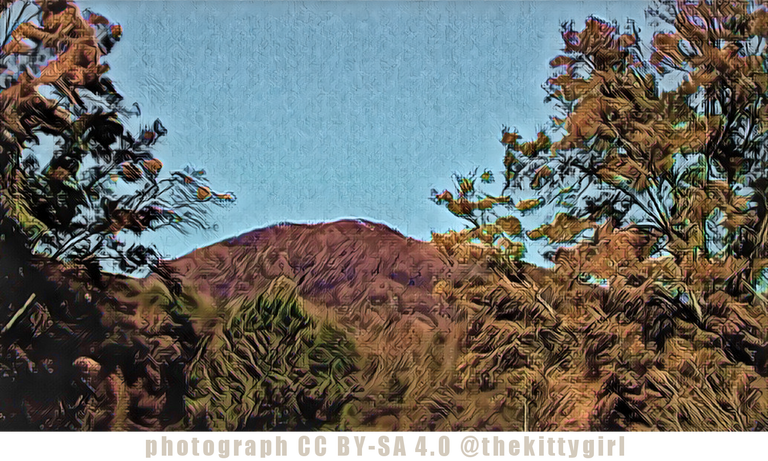
Presumably, the mountain got its name because of the prevalence of wild turkeys in the area, but it could have been named "Turkey Mountain" instead of honoring just the males of the species. Who knows, perhaps those who named the mountain had a purpose...?!?!?
And then one day, I happened to see this fellow strutting down a country road...
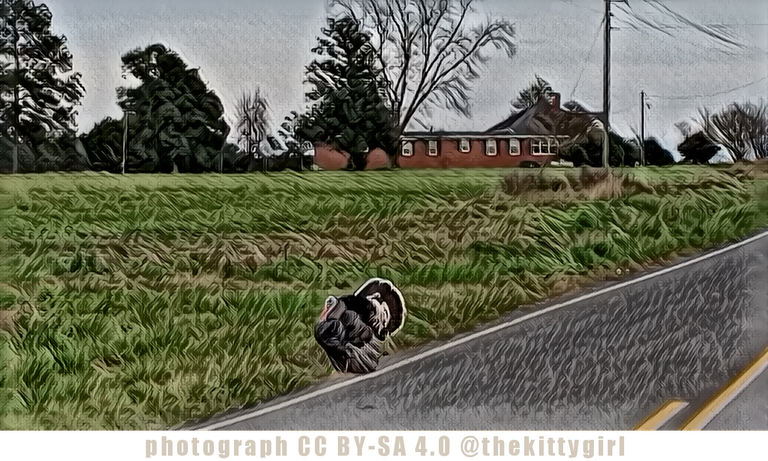
This is a wild turkey (Meleagris gallopavo), the same as the type for which the mountain was named (although this particular specimen was photographed 270 miles (435 km) away, in another state (southern Georgia, US). But, it is the same species.
HOWEVER... there are different sub-species. The most common wild turkey in the eastern regions of the US is the Eastern Wild Turkey (Meleagris gallopavo silvestris) which have chestnut-brown on the tail feathers, so this specimen is a different type. The next-most common is the Osceola Turkey Meleagris gallopavo osceola, which is usually only found in Florida and is described as having feathers with a iridescent greenish-purplish sheen, so I do not think this bird fits the description, especially after comparing with some photos online.
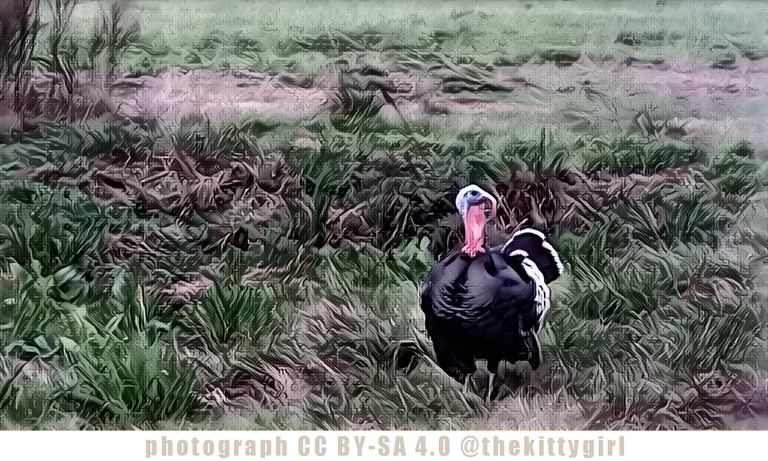
Further research on the Internet leads me to think this might, possibly, be a hybrid variety called the Point Judith Bronze (or simply the Bronze Turkey) which was named for the Point Judith area in Rhode Island where the breed originated.
Bronze turkeys were developed by crossing domestic turkeys brought from England, with wild turkeys. These matings produced a bird that was larger and more robust than the European turkeys, and tamer than wild turkeys. [source]
Compare the photo on this page with the one in my photos to see how I arrived at this potential selection.
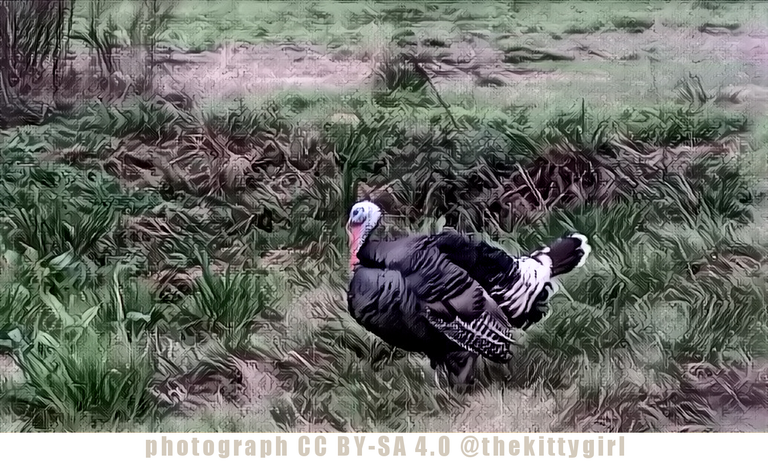
Despite the name "turkey cock" used for the name of the mountain at the top of this post, a male turkey is usually referred to (at least in the US) as a "tom" turkey, rather than a "turkey cock." I asked this fellow, but he didn't express any preference. 😂
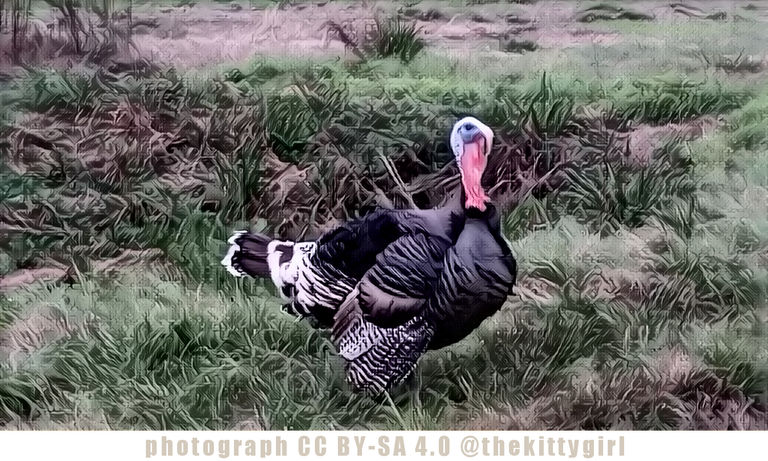
This is definitely a male turkey, as exhibited by his "display" in the following photos. Birds will display in this manner whenever they are trying to impress a potential mate or when they are trying to look imposing. Perhaps, sensing my presence, he was trying to assert his dominance and let me know that I was on his turf? I certainly hope he did not see me as a potential mate! 😱
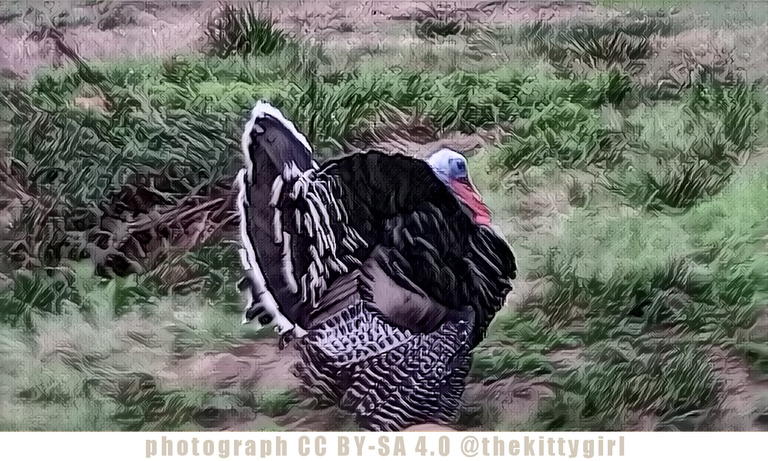
I have seen the Eastern Wild Turkey with chestnut-brown tail feathers in this area several times while driving-around, looking for barns to add to my Old Barn Project, but never managed to get a photo of them. Perhaps one day, I shall, and can do a post about them and their habitats.
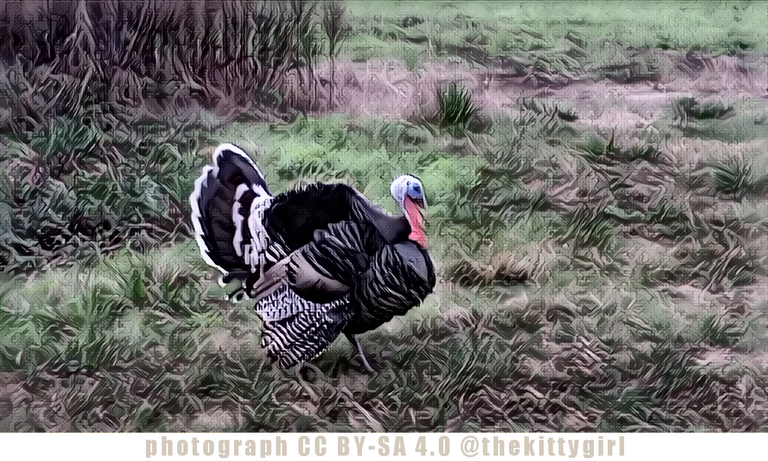
 😊
😊SOURCES
1 LivestockOfTheWorld: Bronze Turkeys
2 Wikipedia: Wild Turkey
!steemitworldmap 34.950367 lat -82.773648 long Pickens County, SC D3SCR



 to learn more about either of these projects, please visit: @heyhaveyamet or @steemterminal
to learn more about either of these projects, please visit: @heyhaveyamet or @steemterminal
14-Dec-2019
View or trade
BEER.BEERHey @thekittygirl, here is a little bit of from @pixresteemer for you. Enjoy it!What a beautiful turkey @thekittygirl :) Didn't know the breed, a lovely find on your drive !
We are SO proud to have you as a member of our
FANTABULOUS Power House Creatives family!
upvoted and resteemed!
❤ MWAH!!! ❤
JOIN US HERE
FOLLOW US ON TWITTER#powerhousecreatives
Posted using Partiko Android
Inner BlocksYou have been curated by @hafizullah on behalf of : a community encouraging first hand content, with each individual living their best life, and being responsible for their own well being. #innerblocks Check it out at @innerblocks for the latest information and community updates, or to show your support via delegation.
I hardily agree on the mountain name! They probably enjoyed the idea of getting to say cock! 😉
Posted using Partiko iOS
Congratulations, Your Post Has Been Added To The Steemit Worldmap!
Author link: http://steemitworldmap.com?author=thekittygirlPost link: http://steemitworldmap.com?post=turkey-cock-mountain
Want to have your post on the map too?